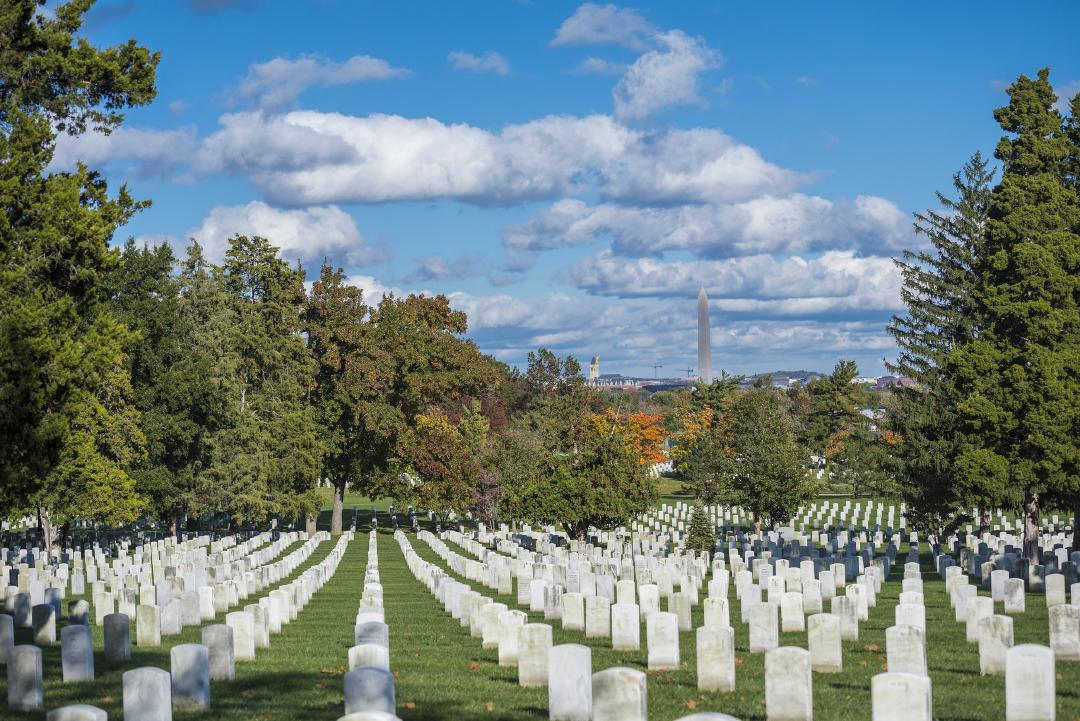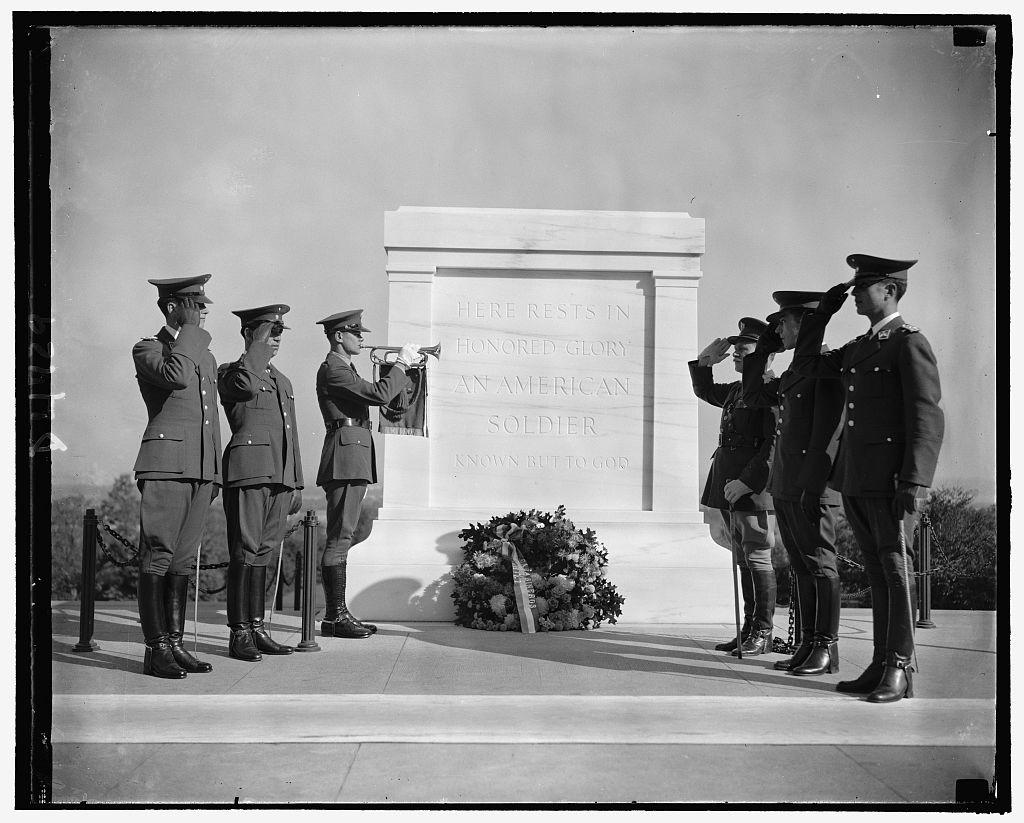Arlington National Cemetery

The former estate is the final resting place for hundreds of thousands of veterans, civil dignitaries, and their eligible dependents.
Arlington National Cemetery is widely known for the famous changing of the guard ceremony at the Tomb of the Unknown Soldier. It is also known as the gravesite of the late President John F. Kennedy, who was assassinated in 1963. But many don't know how this sacred burial ground came to be.
In 1778, John Parke Custis, the son of Martha Washington and her first husband, Daniel Parke Custis, bought a piece of land measuring 1,100 acres in northern Virginia. The land was situated on rolling hills and had a view of Washington, D.C. After John's death, his son, George Washington Parke Custis, inherited the property in 1802 when it was then known as Mount Washington. George was the step-grandson of the first President of the United States, George Washington.
Custis had a mansion constructed in the Greek Revival style. It was his home and also served as a place to showcase his vast collection of George Washington heirlooms, furniture, silver, china, and family portraits. The mansion was named Arlington House and was built by enslaved African Americans. Custis and his wife, Mary Lee Fitzhugh, resided at Arlington House until they passed away in 1857 and 1853, respectively.
Mary Anna Randolph Custis, the only child of the Custis family, married Robert E. Lee in June 1831. Lee was a West Point graduate and the son of a Virginia governor who had served three terms. In 1857, the Lees inherited the Custis estate, which included 196 enslaved individuals who lived and worked on the plantation.
At the start of the Civil War, Union forces seized the property due to its rolling hills and commanding view of the nation's capital. Initially, the Arlington House was used as an army headquarters and a campground, but soon, several forts were built on the property. Also, beginning in June 1863, a large settlement was established to house freed and escaped enslaved persons.
In 1864, the army started using the sprawling estate for military burials as the existing national cemeteries ran out of space. Officially, it became a national cemetery on June 15, 1864.
Like all national cemeteries at the time, it remained segregated, both by race and rank, until 1948, when President Harry S. Truman desegregated the entire military. Initially, burial at a national cemetery was not considered an honor. Still, it ensured that service members whose families could not afford to bring them home for a funeral were given a proper burial.
The first official “Decoration Day,” later renamed Memorial Day, was held at Arlington National Cemetery on May 30, 1868. This tradition continues today and is one of the reasons why it was transformed from one of many national cemeteries into the premier national military cemetery.
After the Civil War, Congress authorized a designated section for Confederate soldiers to reconcile the nation.
Of over 53,000 American soldiers who died in World War I, many remained unidentified. In 1921, the US Congress approved the burial of an unidentified American soldier. On November 11 of the same year, the remains of an unknown serviceman brought from France were placed in a dedicated tomb. The tomb was later expanded to include the remains of an unknown soldier from World War II, the Korean War, and the Vietnam War. After a few years, the remains of the unknown soldier from the Vietnam War were exhumed, positively identified, and reburied in a family grave. It is now known as the Tomb of the Unknown Soldier.
In 1925, the Arlington House, where the leader of the Confederate Army, General Robert E. Lee, lived for a while, was dedicated as a memorial to Lee. It is the only national memorial to honor a Confederate leader.
Since 1937, The Tomb of the Unknown Soldier, also known as the Tomb of the Unknowns, has been guarded continuously, 24 hours a day, seven days a week, by servicemen and servicewomen from the 3rd U.S. Infantry, the oldest active-duty infantry unit in the Army, also known as "The Old Guard.".
Today, the Arlington National Cemetery is the final resting place for approximately 400,000 veterans, men and women, and their eligible dependents from every one of America’s major wars, from the Revolutionary War to today's conflicts. Former presidents William Howard Taft and John F. Kennedy are also buried there, together with many civilian dignitaries such as the planner of the new capital city of Washington, Pierre Charles L’Enfant, famed North Pole explorer Robert Edwin Peary, 12 Supreme Court justices, and 19 astronauts.
Images


